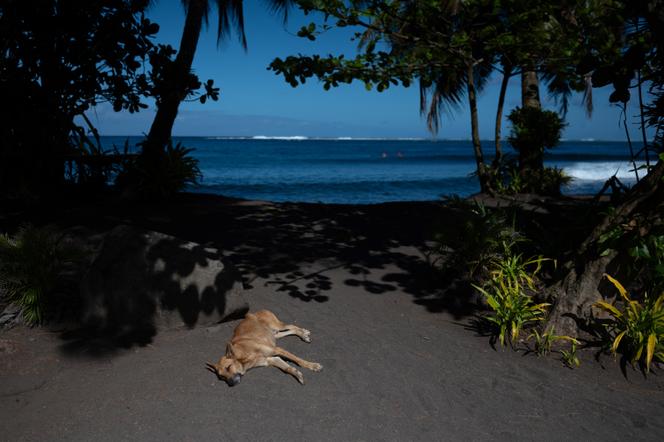


A man was found dead covered in bite marks, on Raiatea, in the Leeward Islands, in July. An autopsy confirmed that the cause of death was a dog attack. Three years earlier, an octogenarian was also killed by a pack of dogs while jogging in the middle of town on the island of Tahiti. These two deaths, together with serious injuries to children and scooter accidents involving animals, have caused a great deal of distress in French Polynesia, but little has changed. Animal protection organizations estimate the dog population in French Polynesia at almost 500,000. That's almost double the 280,000 inhabitants spread over 72 inhabited islands.
There are too many dogs, and when they do have owners, they are difficult to identify. According to Carole Couturier, president of l'Alliance pour le Respect et la Protection des Animaux de Polynésie (ARPAP), "85% of dogs considered to be strays are in fact roaming: They have an owner, but the owner doesn't consider himself as such because the dog came to him by his own means, or someone gave it to him, and he kept it."
Bora-Bora, "the pearl of the Pacific," is no exception to this plague. The small islands of the five-star hotels in its turquoise lagoon are often spared. However, as soon as tourists – mainly Americans – set foot on the main island, they are struck by the plight of the starving animals that swarm in the area. Despite the cost and administrative hurdles, a number of canines are adopted each year by tourists who then take them to the USA or France.
"In Bora-Bora, tourists appreciate everything except the way animals are treated," observed Virginie Bruant, who was the minister in charge of animal welfare until the change of government in May – a ministerial function that no longer exists. Animal suffering is also an economic handicap for these islands, where tourism is the primary source of revenue.
"We sterilize around 500 dogs on Bora-Bora every year, but just as many are born because owners don't want to sterilize, even though our association pays for it," deplored Jenny Dieudonné, a volunteer with the Bora-Bora Animara association. "Many believe it goes against nature." According to her, the 2017 census reported 7,000 dogs for every 10,000 residents on the island, not counting stray animals.
On the most populated islands, like Tahiti, Moorea or Raiatea, it's sometimes difficult to sleep, and not just because of the mosquitoes. Dogs bark from valley to valley, their barking mingling with the crowing of roosters who roam free and tend to crow all night long. This noise pollution even affects the real estate market.
You have 55% of this article left to read. The rest is for subscribers only.
